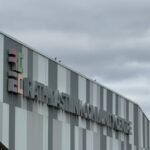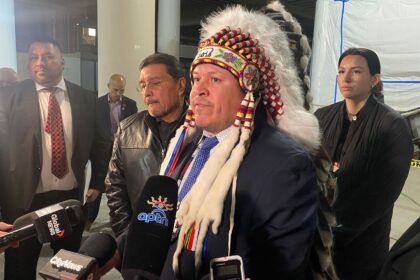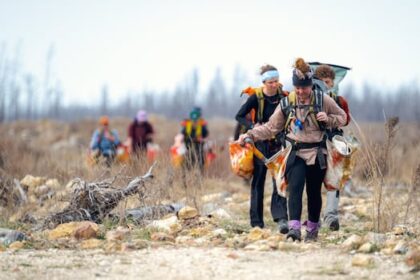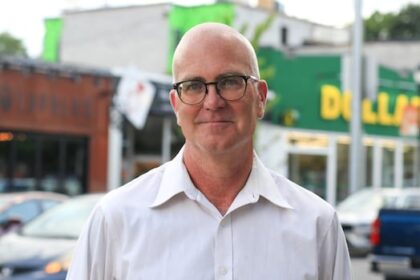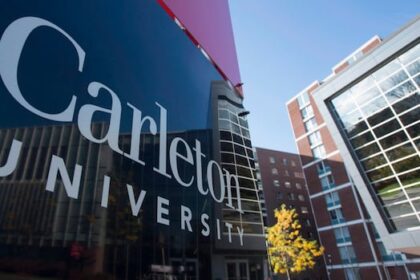ArtsGet to know the Sobey Art Award finalist from the Circumpolar region whose playful sculptures and drawings explore Inuit daily life through the lens of pop culture.The Sobey finalist playfully explores Inuit daily life through the lens of pop cultureChris Hampton · CBC Arts · Posted: Nov 03, 2025 3:09 PM EST | Last Updated: November 3Listen to this articleEstimated 8 minutesStill from Tarralik Duffy Sobey Art Award video, National Gallery of Canada, Ottawa, 2025. (National Gallery of Canada)When Tarralik Duffy has an idea, she feels a responsibility to follow it. For the artist from Salliq, Nunavut, the feeling comes from the Inuit teaching to waste nothing. “It goes beyond wasting food,” she says. “It’s like: Don’t waste the ideas.” The multi-hyphenate creative is an accomplished writer, jewelry designer and visual artist whose work includes drawing, photography, textiles, sculptures and printmaking. She’s best known for her soft sculptures — outsize pop cans and gas containers stitched from leather — which have been compared to the masterworks of pop titans like Claes Oldenburg and Coosje van Bruggen. Playfully exploring Inuit daily life through the lens of pop culture, Duffy’s work has been the subject of solo exhibitions at the Winnipeg Art Gallery, Art Gallery of Ontario and Remai Modern. In 2021, she was awarded the Kenojuak Ashevak Memorial Award, a major prize dedicated to Inuit artists. Now, Duffy is a finalist for the $100,000 Sobey Art Award — the largest purse for contemporary artists in Canada — where she is representing the Circumpolar region. To become more familiar with the 2025 Sobey finalists, CBC Arts sent a questionnaire to each of the six artists. Read on to learn how Duffy’s work helps her reconcile different worlds, what artists always make her feel wonder and how a pair of animal bones started her journey in art. The winner of the 2025 Sobey Art Award will be announced on Nov. 8. You can follow all of our Sobey Art Award coverage here.This interview has been edited for length and clarity.WATCH | 2025 Sobey Art Award — Tarralik Duffy:CBC Arts: When did you first know that you wanted to be an artist?Tarralik Duffy: There was always something about art that would pull my focus. As a child I remember standing in the carving section at the old co-op completely mesmerized by certain carvings, the transformation scenes in particular. The first time I saw pieces by Alootook Ipellie and Pudlo Pudlat are intensely vivid memories. They made me stop in my tracks, and I’ve never lost my wonder for them. I don’t think I understood that it was calling to me; I just knew it was one of the things in this world that drew me in like very few other things. What does art give you the opportunity to do?The best thing about art is that it can be many things. It isn’t just one thing. I am a person of many interests and I love to follow the ideas that present themselves to me. Art is a way of expressing ourselves (obviously), and the fact that it can take many shapes and forms and be communicated through a multitude of mediums is the most wonderful part. It is not a stagnant thing, it’s a living thing. It gives me the opportunity to move around and be fluid in my work. Is there a question, inquiry or investigation central to your art practice? What is it?I grew up torn between worlds, so there is a friction there that I can never escape. My father being white and my mother being Inuk, and here I am a mix of two seemingly very opposed experiences, trying to make sense of things. There have been many times in my life that I felt like I didn’t belong or couldn’t belong in either world, or that I had to choose between one side or the other. A lot of what I do is finding the places where that clash of worlds isn’t as irreconcilable as I thought. And sometimes, it’s just a matter of staying busy.Tarralik Duffy, installation view at the Sobey Art Award exhibition, National Gallery of Canada, Ottawa, Oct. 3, 2025 – Feb. 8, 2026. (National Gallery of Canada)Why do you practice the disciplines you do? Why do you use the materials you do? What is their significance?For me, it really started with the bones. One day, I was walking along the beaches just outside of my home community, and there were these two perfectly weather-whitened intervertebral discs washed up, right by my feet. I remember looking down at them and thinking what beautiful earrings they would make. It became an obsession, to find the bones and learn about the process of cleaning them. I didn’t have a thought beyond that, I enjoyed finding them and cleaning them and turning them into jewelry. That was the moment something special started: I was learning how to use what was around me. It taught me to take advantage of the seasons as well. As soon as the snow would melt enough, I’d be out there hunting for bones. It is the same with photography. I think especially in the North, the sky can change so quickly; sometimes, you just have a few moments to run down to the shore and take the picture that you see in front of you. If you wait too long, the moment is gone. Something about that is the discipline you have to use in your work: If the idea presents itself, you have to follow the urgency. You have to get it done. You can’t wait. What do you hope viewers experience through your art?This is a question I can never answer, and the thing I love best about art. They are going to feel whatever they feel and I love that I don’t have any say in it. To work best, what do you absolutely need?To be alive, to have friends that I can discuss my innermost thoughts with, to talk about whatever it is that is brooding in my mind. I have been so fortunate in my life that I’ve always had people around me that love me and believe in me. I am very quick to dismiss myself and to be hyper critical of the things I do, often lost in my own self loathing. I’ve truly needed the love and support of my community — of which, I have had a monumental amount, almost to a degree where I feel undeserving. I have a responsibility to that love. What was the most impactful work of art — in any medium — you experienced this past year?Comedy and live music, going out and experiencing things that are happening in real time. That’s the kind of thing that fuels your spirit in a way that nothing else can. If you weren’t an artist, what would you like to do for work?I have been many other things before and I am many different things now, so I am not quite sure. I just know that I would do anything I could to not have a job where I have to sit all day. I couldn’t do that. I have to move and work with my hands in some way. Tarralik Duffy, installation view at the Sobey Art Award exhibition, National Gallery of Canada, Ottawa, Oct. 3, 2025 – Feb. 8, 2026. (National Gallery of Canada)Can you tell us about the artwork you’re showing at the National Gallery of Canada for the Sobey Art Award exhibition?I am showing a mixture of drawings and soft sculptures. The show piece is a large Coca-Cola can I hand sewed in leather, but I use Inuktitut syllabics instead of English and played on the word phonetically, so it reads “Kuuka-Kuula” in Inuktitut. Attached to that is another large scale “Eskimo art” tag, so you know its authentic Eskimo art. 😉 The other pieces include a large cigarette and lighter, a Klik can and a pilot biscuit and a couple of red jerry cans, paying homage to daily life in Nunavut. How does this artwork exemplify your practice?I like to play with language, and to comment on things in a way that is both playful and meaningful. Art is a way of saying things without saying anything at all. I think these artworks are a way of welcoming you into our world while making you think about it in a way perhaps you hadn’t before. The winner of the 2025 Sobey Art Award will be announced on Nov. 8 in Ottawa. The Sobey Art Award exhibition continues at the National Gallery of Canada through Feb. 8, 2026. ABOUT THE AUTHORChris Hampton is a producer with CBC Arts. His writing has appeared elsewhere in the New York Times, the Toronto Star, the Globe and Mail, The Walrus and Canadian Art. Find him on Instagram: @chris.hampton
Monday, 22 Dec 2025
Canada – The Illusion
Search
Have an existing account?
Sign In
© 2022 Foxiz News Network. Ruby Design Company. All Rights Reserved.
You May also Like
- More News:
- history
- Standing Bear Network
- John Gonzalez
- ᐊᔭᐦᑊ ayahp — It happened
- Creation
- Beneath the Water
- Olympic gold medal
- Jim Thorpe
- type O blood
- the bringer of life
- Raven
- Wás’agi
- NoiseCat
- 'Sugarcane'
- The rivers still sing
- ᑲᓂᐸᐏᐟ ᒪᐢᑿ
- ᐅᑳᐤ okâw — We remember
- ᐊᓂᓈᐯᐃᐧᐣ aninâpêwin — Truth
- This is what it means to be human.
- Nokoma



